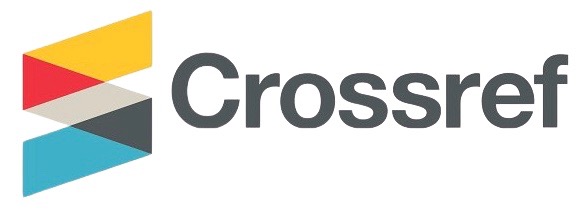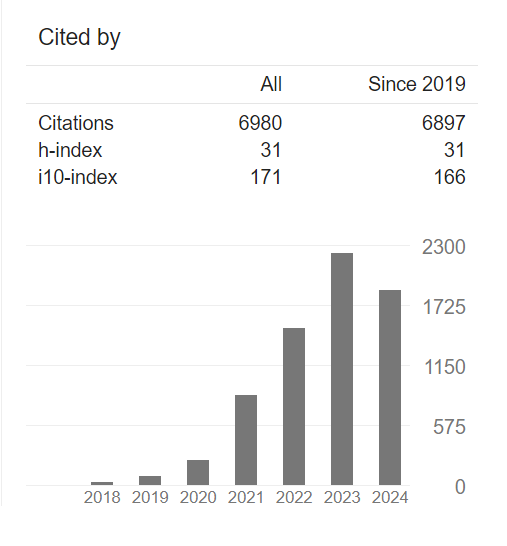Paradigm Shifts in Design Thinking: A Scientometric Review
Abstract
This study investigates the paradigm shift in design thinking from a user-centered operational methodology to a complex socio-technical framework supporting systemic innovation and sustainable development. Using CiteSpace-based bibliometric and knowledge mapping techniques, we analyzed 318 high-quality articles indexed in the Web of Science Core Collection (2015–2024). Our findings reveal a clear three-phase evolutionary trajectory: from tool-centric education and service design applications, through the development of organizational dynamic capabilities, to the recent emphasis on system-wide co-creation and sustainability-oriented innovation. Cluster analysis identifies core knowledge domains, emerging trends in ethical AI co-design, and agile–design hybrid approaches. We further propose a three-dimensional theoretical model integrating cognitive, organizational, and technological perspectives. This work contributes to the theoretical understanding of design thinking's evolving identity and offers practical implications for education, management strategy, and sustainable socio-technical system transformation.
Downloads
References
Alashwal, M. (2020). Design thinking in STEM education: A review. International Research in Higher Education, 5(1), 18.
Amin, A., Khodaei, F., Gazori, R., & Ardestani, H. (2024). Innovation in complex systems: Identifying opportunities with systems thinking and powering change through design thinking. IntechOpen. https://doi.org/10.5772/intechopen.114374.
Arifin, N. R., & Mahmud, S. N. D. (2021). A systematic literature review of design thinking application in STEM integration. Creative Education, 12(7), 1558-1571.
Athey, S., & Imbens, G. W. (2017). The state of applied econometrics: Causality and policy evaluation. Journal of Economic perspectives, 31(2), 3-32.
Auernhammer, J., & Roth, B. (2021). The origin and evolution of Stanford University’s design thinking: From product design to design thinking in innovation management. Journal of Product Innovation Management, 38(6), 623-644.
Auernhammer, J., & Roth, B. (2023). What is design thinking? In C. Meinel, L. Leifer, & H. Plattner (Eds.), Design thinking research: Innovation–insight–then and now (pp. 169–196). Springer. https://doi.org/10.1007/978-3-031-33455-4_10.
Azad, A., Khodaei, F., & Gazori, R. (2024). Systems thinking and powering change through design thinking. Systems Engineering: Design, Analysis, Programming, and Maintenance of Complex Systems, 95.
Bartolomucci, F., Trasciani, G., & Gerli, F. (2024). Social and technological innovation: Cross-fertilization needed. In A. A. Aguado, R. Giannetti, & D. Di Stefano (Eds.), Improving technology through ethics (pp. 93–105). Springer. https://doi.org/10.1007/978-3-031-38314-9_8.
Beckman, S. L., & Barry, M. (2007). Innovation as a learning process: Embedding design thinking. California Management Review, 50(1), 25-56.
Bertão, R. A., Jung, C. H., Chung, J., & Joo, J. (2023). Design thinking: A customized blueprint to train R & D personnel in creative problem-solving. Thinking Skills and Creativity, 48, 101253.
Bhandari, A. (2023). Design thinking: from bibliometric analysis to content analysis, current research trends, and future research directions. Journal of the Knowledge Economy, 14(3), 3097-3152.
Bicen, P., & Gudigantala, N. (2019). Designing the way forward: The role of design thinking in the era of digital creativity. Journal of Strategic Innovation and Sustainability, 14(5), 10-19.
Bouwman, S., Voorendt, J., Eisenbart, B., & McKilligan, S. (2019). Design thinking: An approach with various perceptions. In Proceedings of the Design Society: International Conference on Engineering Design (Vol. 1, Issue 1, pp. 2785–2794). Cambridge University Press. https://doi.org/10.1017/dsi.2019.284.
Buchanan, R. (1992). Wicked problems in design thinking. Design Issues, 8(2), 5-21.
Buchanan, R. (2019). Systems thinking and design thinking: The search for principles in the world we are making. She Ji: The Journal of Design, Economics, and Innovation, 5(2), 85-104.
Cai, Y., Lin, J., & Zhang, R. (2023). When and how to implement design thinking in the innovation process: A longitudinal case study. Technovation, 126, 102816.
Carlgren, L., Rauth, I., & Elmquist, M. (2016). Framing design thinking: The concept in idea and enactment. Creativity and Innovation Management, 25(1), 38-57.
Carlgren, L. (2013). Identifying latent needs: towards a competence perspective on attractive quality creation. Total Quality Management & Business Excellence, 24(11-12), 1347-1363.
Chen, C., & Song, M. (2019). Visualizing a field of research: A methodology of systematic scientometric reviews. PloS one, 14(10), e0223994.
Cipriani, T. K., Deserti, A., & Rizzo, F. (2021). The role of design research in and for social innovation. In J. Howaldt, C. Kaletka, & A. Schröder (Eds.), A research agenda for social innovation (pp. 229–244). Edward Elgar Publishing.
Cleveland, W. J. (2023). How is Design Thinking Applied in Practice? Drexel University.
Cousins, B. (2018). Validating a design thinking strategy: Merging design thinking and absorptive capacity to build a dynamic capability and competitive advantage. Journal of Innovation Management, 6(2), 102-120.
Daugherty, P. R., & Wilson, H. J. (2024). Human+ Machine, Updated and Expanded: Reimagining Work in the Age of AI. Harvard Business Press.
De Goey, H., Hilletofth, P., & Eriksson, L. (2019). Design-driven innovation: a systematic literature review. European Business Review, 31(1), 92-114.
De Jager, J. (2021). Rethinking design thinking from a positive psychology perspective North-West University (South-Africa)].
Dell'Era, C., Magistretti, S., Cautela, C., Verganti, R., & Zurlo, F. (2020). Four kinds of design thinking: From ideating to making, engaging, and criticizing. Creativity and Innovation Management, 29(2), 324-344.
Dorst, A. G. (2011). Personification in discourse: Linguistic forms, conceptual structures and communicative functions. Language and Literature, 20(2), 113–135. https://doi.org/10.1177/0963947011398601.
Dorst, K. (2019). Co-evolution and emergence in design. Design Studies, 65, 60-77.
Dragičević, N., Vladova, G., & Ullrich, A. (2023). Design thinking capabilities in the digital world: A bibliometric analysis of emerging trends. Frontiers in Education, 7, Article 1012478. https://doi.org/10.3389/feduc.2022.1012478.
Duin, A. H., Moses, J., McGrath, M., Tham, J., & Ernst, N. (2017). Design thinking methodology. Connexions: International Professional Communication Journal, 5(1), 45-74.
Eklund, A. R., Dixon, B., & Wegener, F. (2023). Pre-Reflection-in-Action: Rethinking Schön’s Reflective Practice through the ‘Habits of Design. Design Issues, 39(4), 1-13.
Elsbach, K. D., & Stigliani, I. (2018). Design thinking and organizational culture: A review and framework for future research. Journal of management, 44(6), 2274-2306.
Eriksson, Y., & Carlsson, A.-L. (2022). The challenge of designing meaningful information. In A. Valtonen & I. Koskinen (Eds.), Different perspectives in design thinking (pp. 67–87). CRC Press.
Fei, C. (2024). Design thinking models and tools to support the design process. In A. de Götzen, L. Simeone, & C. Devecchi (Eds.), Envisioning the future of education through design(pp. 49–77). Springer. https://doi.org/10.1007/978-3-031-34135-4_4.
Fitriyah, I. J., & Saputro, S. (2025). Research Trends in Design Thinking Education: A Systematic Literature Review from 2014 to 2024. European Journal of Educational Research, 14(2), 381-391.
Foundation, I. D., Dam, R. F., & Siang, T. Y. (2021). What is design thinking and why is it so popular? Interaction Design Foundation. https://www.interaction-design.org/literature/article/what-is-design-thinking-and-why-is-it-so-popular.
Fu, S., Sun, Y., & Guo, Y. (2023). Revealing product innovation practitioners’ perspectives on design thinking: An exploratory research using Q-sort methodology. Technology in Society, 74, 102281.
Gemser, G., Calabretta, G., & Karpen, I. (2025). Co‐creating the future through design thinking: Deconstructing the consumer co‐creation process. Journal of Product Innovation Management, 42(3), 528-556.
Girgin, D. (2021). Design thinking and its reflections on education. In A. Kabadayı (Ed.), Bridging theory and practices for educational sciences (pp. 215–236). Livre de Lyon.
Glushchenko, V. V. (2023). Development of the design thinking paradigm in the context of the transition to a new technological order. Indonesian Journal of Multidiciplinary Research, 3(1), 117-130.
Göransdotter, M. (2020). Transitional design histories (Doctoral dissertation, Umeå University, Faculty of Science and Technology, Umeå Institute of Design). Umeå University. https://urn.kb.se/resolve?urn=urn:nbn:se:umu:diva-174353.
Goulet, M. M. (2019). How useful is design thinking? A scholarly and experiential critique [Unpublished manuscript, University of Texas repository]. University of Texas at Austin. Retrieved from https://repositories.lib.utexas.edu/items/559a4c8e-55bb-4961-a70d-801199b702bc.
Govers, M., & Van Amelsvoort, P. (2023). A theoretical essay on socio-technical systems design thinking in the era of digital transformation. Gruppe. Interaktion. Organisation. Zeitschrift für Angewandte Organisationspsychologie (GIO), 54(1), 27-40.
Gramegna, S. M., & Valusyte, R. (2022). Learning by doing: Investigating the integration of design thinking research methods into an auto‑construction design workshop for the development of living environments for seniors. In Proceedings of the 15th International Conference of Education, Research and Innovation (ICERI2022) (pp. 93–105). IATED. https://doi.org/10.21125/iceri.2022.1077.
Guaman-Quintanilla, S., Everaert, P., Chiluiza, K., & Valcke, M. (2023). Impact of design thinking in higher education: a multi-actor perspective on problem solving and creativity. International Journal of Technology and Design Education, 33(1), 217-240.
Guo, X., Xiao, Y., Wang, J., & Ji, T. (2023). Rethinking designer agency: A case study of co-creation between designers and AI. In D. De Sainz Molestina, L. Galluzzo, F. Rizzo, & D. Spallazzo (Eds.), IASDR 2023: Life-changing design(IASDR Conference Series). Milan, Italy. https://doi.org/10.21606/iasdr.2023.478.
Habbal, F. (2016). Embedding design thinking in a multidisciplinary engineering curriculum at Harvard University. In B. Banerjee & S. Ceri (Eds.), Creating innovation leaders (pp. 149–162). Springer. https://doi.org/10.1007/978-3-319-20520-5_8.
Haghani, M. (2023). What makes an informative and publication-worthy scientometric analysis of literature: a guide for authors, reviewers and editors. Transportation Research Interdisciplinary Perspectives, 22, 100956.
He, J., & Ortiz, J. (2021). Sustainable business modeling: The need for innovative design thinking. Journal of Cleaner Production, 298, 126751.
Henriksen, D., Mehta, R., & Mehta, S. (2019). Design thinking gives STEAM to teaching: A framework that breaks disciplinary boundaries. STEAM education: Theory and practice, 57-78.
Hsu, Y.-C. (2021). An action research in critical thinking concept designed curriculum based on collaborative learning for engineering ethics course. Sustainability, 13(5), 2621.
Kelly, N., & Gero, J. S. (2022). Reviewing the concept of design frames towards a cognitive model. Design Science, 8, e30.
Khawaldeh, J. (2025). Collisional thinking theory (CTT): A new paradigm for accelerating human consciousness and innovation: The role of waste of thinking [Preprint]. Authorea. https://www.authorea.com/users/904865/articles/1287889-collisional-thinking-theory-ctt-a-new-paradigm-for-accelerating-human-consciousness-and-innovation-the-role-of-waste-of-thinking.
Kimbell, L. (2011). Rethinking design thinking: Part I. Design and Culture, 3(3), 285–306. https://doi.org/10.2752/175470811X13071166525216
Kwon, J., Choi, Y., & Hwang, Y. (2021). Enterprise design thinking: An investigation on user-centered design processes in large corporations. Designs, 5(3), 43.
Lake, D., Flannery, K., & Kearns, M. (2021). A cross-disciplines and cross-sector mixed-methods examination of design thinking practices and outcomes. Innovative Higher Education, 46(3), 337–356. https://doi.org/10.1007/s10755-021-09547-6
Leal Filho, W., Schmidberger, I., Sharifi, A., Vargas, V. R., Rampasso, I. S., Dibbern, T., Liakh, O., Aina, Y. A., Trevisan, L. V., & Mbah, M. F. (2024). Design thinking for sustainable development: A bibliometric analysis and case study research. Journal of Cleaner Production, 455, 142285.
Lee, K. (2024). Institutions as Objects in Fourth Order Design. She Ji: The Journal of Design, Economics, and Innovation, 10(2), 169-191.
Lewrick, M., Link, P., & Leifer, L. (2020). The design thinking toolbox: A guide to mastering the most popular and valuable innovation methods. John Wiley & Sons.
Liedtka, J. (2015). Perspective: Linking design thinking with innovation outcomes through cognitive bias reduction. Journal of Product Innovation Management, 32(6), 925-938.
Liedtka, J. (2017). Evaluating the impact of design thinking in action. Academy of Management Proceedings, 2017(1), 10264. https://doi.org/10.5465/AMBPP.2017.177.
Lin, K.-Y., & Chu, I.-T. (2024). A design thinking approach to integrate supply chain networks for circular supply chain strategy in Industry 4.0. Industrial Management & Data Systems. Advance online publication. https://doi.org/10.1108/IMDS-04-2024-0369.
Luo, L., Xu, C., Liu, P., Li, Q., & Chen, S. (2024). A bibliometric analysis of the status, trends, and frontiers of design thinking research based on the web of science core collection (2011–2022). Thinking Skills and Creativity, 53, 101570.
Macgilchrist, F., Jarke, J., Allert, H., & Pargman, T. C. (2024). Design beyond design thinking: Designing postdigital futures when weaving worlds with others. Postdigital Science and Education, 6(1), 1-12.
Magistretti, S., Ardito, L., & Messeni Petruzzelli, A. (2021). Framing the microfoundations of design thinking as a dynamic capability for innovation: Reconciling theory and practice. Journal of Product Innovation Management, 38(6), 645-667.
Magistretti, S., Pham, C. T. A., & Dell'Era, C. (2021). Enlightening the dynamic capabilities of design thinking in fostering digital transformation. Industrial Marketing Management, 97, 59-70.
Markus, K. A., & Borsboom, D. (2024). Frontiers of test validity theory: Measurement, causation, and meaning. Routledge.
Martin, R. L. (2009). The design of business: Why design thinking is the next competitive advantage. Harvard Business Press.
Manzini, E. (2015). Design, when everybody designs: An introduction to design for social innovation. MIT Press.
Mayer, S., & Schwemmle, M. (2025). The impact of design thinking and its underlying theoretical mechanisms: A review of the literature. Creativity and Innovation Management, 34(1), 78-110.
Mejía, G. M., Henriksen, D., Xie, Y., García-Topete, A., Malina, R. F., & Jung, K. (2023). From researching to making futures: a design mindset for transdisciplinary collaboration. Interdisciplinary Science Reviews, 48(1), 77-108.
Micheli, P., Wilner, S. J., Bhatti, S. H., Mura, M., & Beverland, M. B. (2019). Doing design thinking: Conceptual review, synthesis, and research agenda. Journal of Product Innovation Management, 36(2), 124-148.
Mohapatra, A. (2020). Designing for AI: A collaborative framework to bridge the gap between designers and data scientists and enabling designers to create human‑centered AI products and services (Master’s thesis, KTH Royal Institute of Technology, School of Industrial Engineering and Management). KTH Royal Institute of Technology. https://kth.diva-portal.org/smash/record.jsf?pid=diva2%3A1501764.
Mugadza, G. (2021). Pluralist use of methods and methodologies-Multi-Methodology and multi-paradigm Research. Academia Letters, 2.
Noweski, C., Scheer, A., Büttner, N., von Thienen, J., Erdmann, J., & Meinel, C. (2012). Towards a paradigm shift in education practice: Developing twenty‑first century skills with design thinking. In H. Plattner, C. Meinel, & L. J. Leifer (Eds.), Design Thinking Research: Measuring Performance in Context (pp. 71–94). Springer. https://doi.org/10.1007/978-3-642-31991-4_6.
Pata, K., Bauters, M., Vesikivi, P., & Holvikivi, J. (2021). Agile and lean methods with design thinking. In C. Vaz de Carvalho & M. Bauters (Eds.), Technology Supported Active Learning: Student‑Centered Approaches (pp. 13–30). Lecture Notes in Educational Technology. Springer. https://doi.org/10.1007/978-981-16-2082-9_2.
Pechonjeh, S. T. (2021). How can design thinking be used to improve customer experience? Case study: Design Thinking in IBM (Bachelor’s thesis, Metropolia University of Applied Sciences, International Business & Logistics). Metropolia University of Applied Sciences. https://urn.fi/URN:NBN:fi:amk-2021060314103.
Piłat, P. (2024). Designing the design: Application of design thinking to social innovation planning. Scientific Papers of Silesian University of Technology. Organization and Management Series, 193, 317–341. https://doi.org/10.29119/1641-3466.2024.193.18.
Pont Rojas, M. (2024). AId for design thinking: Stage-by-stage literature review on the potential of AI in design thinking [Master’s thesis, Utrecht University]. Utrecht University. https://studenttheses.uu.nl/handle/20.500.12932/47956.
Ramírez-Gordillo, T., Mora, H., Pujol-Lopez, F. A., Jimeno-Morenilla, A., & Maciá-Lillo, A. (2023). Industry 5.0: towards human centered design in human machine interaction. The International Research & Innovation Forum,
Razzouk, R., & Shute, V. (2012). What is design thinking and why is it important? Review of Educational Research, 82(3), 330–348. https://doi.org/10.3102/0034654312457429.
Retna, K. S. (2019). Industry 5.0: Towards human centered design in human machine interaction. In A. Visvizi, O. Troisi, & V. Corvello (Eds.), Research and Innovation Forum 2023 (Springer Proceedings in Complexity, pp. 661–672). Springer International Publishing. https://doi.org/10.1007/978-3-031-44721-1_50.
Rösch, N., Tiberius, V., & Kraus, S. (2023). Design thinking for innovation: context factors, process, and outcomes. European Journal of Innovation Management, 26(7), 160-176.
Rylander Eklund, A., Navarro Aguiar, U., & Amacker, A. (2022). Design thinking as sensemaking: Developing a pragmatist theory of practice to (re) introduce sensibility. Journal of Product Innovation Management, 39(1), 24-43.
Saeidnia, H. R., & Ausloos, M. (2024). Integrating Artificial Intelligence into Design Thinking: A Comprehensive Examination of the Principles and Potentialities of AI for Design Thinking Framework. InfoScience Trends, 1(2), 1-9.
Salli, O. (2022). Sensemaking and the use of boundary objects in a digital services design agency (Master’s thesis, Aalto University School of Business, International Design Business Management). Aalto University. https://aaltodoc.aalto.fi/handle/123456789/10789.
Schoormann, T., Stadtländer, M., & Knackstedt, R. (2023). Act and reflect: integrating reflection into design thinking. Journal of Management Information Systems, 40(1), 7-37.
Schön, D. A. (1983). The reflective practitioner: How professionals think in action. Basic Books.
Shalley, C. E., & Gilson, L. L. (2017). Creativity and the management of technology: Balancing creativity and standardization. Production and Operations Management, 26(4), 605-616.
Sharifi, N. (2022). The role of design thinking in innovation centres and hubs (Master’s thesis, Carleton University). Carleton University Research Virtual Environment. https://curve.carleton.ca/8a0b1d76-d610-443a-847e-2dd36ccda50c .
Sreenivasan, A., & Suresh, M. (2024). Design thinking and artificial intelligence: A systematic literature review exploring synergies. International Journal of Innovation Studies, 8(3), 297–312. https://doi.org/10.1016/j.ijis.2024.05.001.
Simon, H. A. (1996). The sciences of the artificial (3rd ed.). MIT Press.
Swarup, R. R. (2024). Designing Education 4.0: Harnessing the power of Design Thinking. Development, 6(7), 8.
Tan, C. (2020). Revisiting Donald Schön’s notion of reflective practice: A Daoist interpretation. Reflective Practice, 21(5), 686-698.
Tan, L., & Ding, J. (2015). The frontier and evolution of the strategic management theory: A scientometric analysis of Strategic Management Journal, 2001-2012. Nankai Business Review International, 6(1), 20-41.
Tan, L., Kocsis, A., & Burry, J. (2023). Advancing Donald Schön's Reflective Practitioner: Where to Next? Design Issues, 39(3), 3-18.
Tang, X., Windham, J., & Bush, B. (2024). Pre-AI and post-AI design: Balancing human creativity and AI tools in the industrial design process. In Proceedings of the 2024 International Conference on Artificial Intelligence and Future Education (AIFE ’24) (pp. 100–108). Association for Computing Machinery. https://doi.org/10.1145/3708394.3708413.
Tantiyaswasdikul, K. (2019). A framework for design thinking outside the design profession: An analysis of design thinking implementations. Journal of Architectural/Planning Research and Studies (JARS), 16(1), 45-68.
Tham, J. (2022). Pasts and futures of design thinking: Implications for technical communication. IEEE Transactions on Professional Communication, 65(2), 261-279.
Tomaszewski, R. (2023). Visibility, impact, and applications of bibliometric software tools through citation analysis. Scientometrics, 128(7), 4007-4028.
Tsujimoto, M., Kajikawa, Y., Tomita, J., & Matsumoto, Y. (2018). A review of the ecosystem concept—Towards coherent ecosystem design. Technological Forecasting and Social Change, 136, 49-58.
Verganti, R. (2009). Design driven innovation: changing the rules of competition by radically innovating what things mean. Harvard Business Press.
Verganti, R. (2018). Overcrowded: Designing meaningful products in a world awash with ideas. Project Manager (IL), (2018/34), 48. https://doi.org/10.3280/PM2018-034012.
Verganti, R., Dell’Era, C., & Swan, K. S. (2021). Design thinking: Critical analysis and future evolution. In (Vol. 38, pp. 603-622): Wiley Online Library.
von Thienen, J. P., Weinstein, T. J., & Meinel, C. (2023). Creative metacognition in design thinking: exploring theories, educational practices, and their implications for measurement. Frontiers in psychology, 14, 1157001.
Wang, C.-C. (2024). Using design thinking for interdisciplinary curriculum design and teaching: a case study in higher education. Humanities and Social Sciences Communications, 11(1), 1-13.
Wang, X. (2024). Design and validation of a versatile scale for assessing design thinking capability across contexts (Doctoral dissertation, Hong Kong Polytechnic University, School of Fashion and Textiles). Hong Kong Polytechnic University. https://theses.lib.polyu.edu.hk/handle/200/13518.
Worwood, M., & Plucker, J. A. (2017). Domain generality and specificity in creative design thinking. In F. Darbellay, Z. Moody, & T. Lubart (Eds.), Creativity, design thinking and interdisciplinarity (pp. 83–97). Springer Nature Singapore. https://doi.org/10.1007/978-981-10-7524-7_6.
Yang, J., & Mengjia, X. (2022). Relationship Between Design Metacognition and Design Thinking. Journal of Beijing University of Posts and Telecommunications (Social Sciences Edition), 24(1), 85.
Yu, Q., Yu, K., & Lin, R. (2024). A meta-analysis of the effects of design thinking on student learning. Humanities and Social Sciences Communications, 11(1), 1-12.
Zhang, X., Liu, C., Cang, X., Lyu, Y., Zhang, M., Chen, Z., Yu, Y., Sun, Z., & Xue, Y. (2024). Research on the Effect of Design Thinking on Enterprise Sustainable Innovation Ability and Team Performance. Sustainability, 16(11), 4428.
Zhang, Z. (2020). Development of online collaboration tools (OCT) for collaborative innovation design. International Journal of Systematic Innovation, 6(1).

















